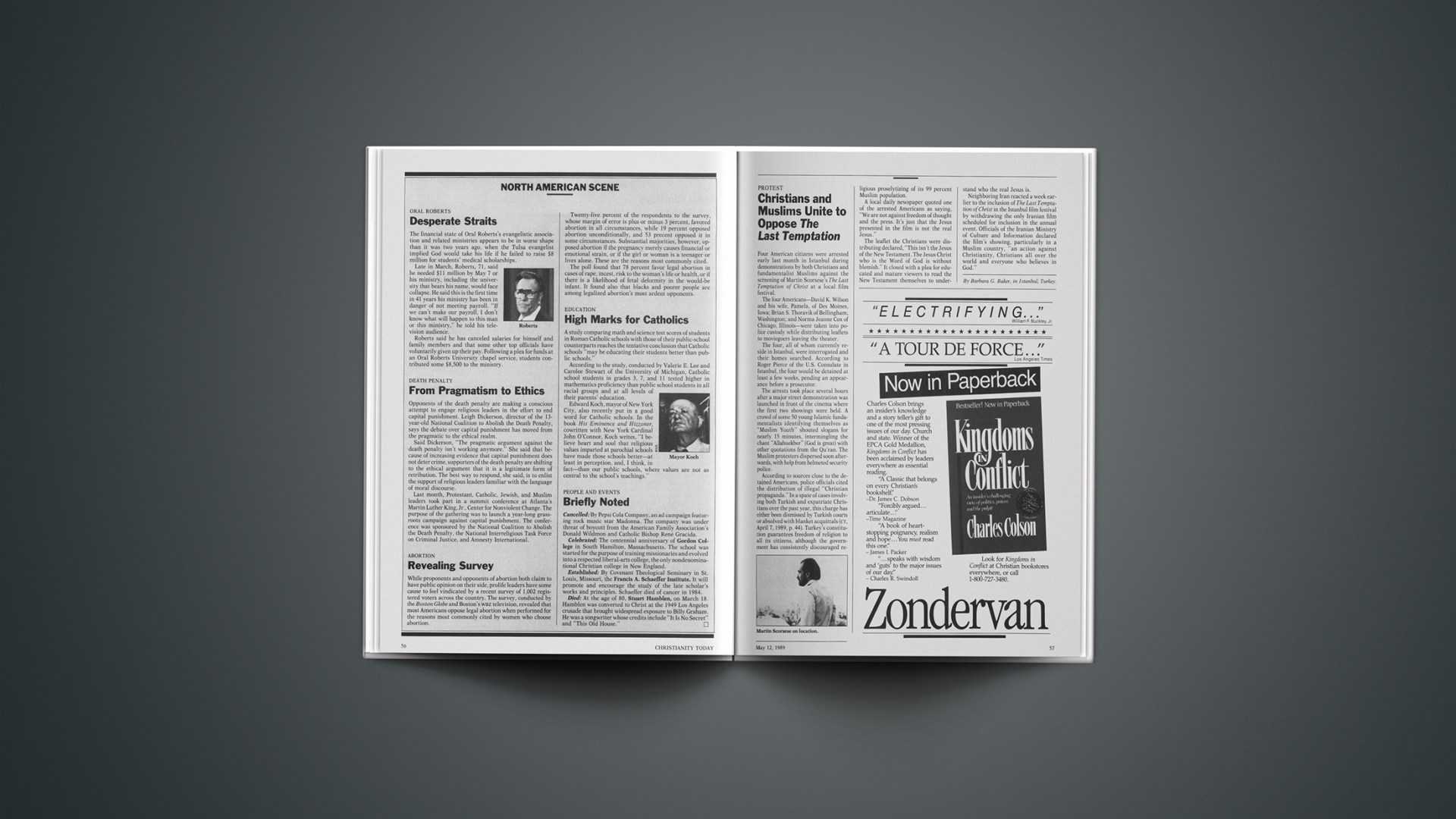Advocates of legalized abortion were buoyed by an unprecedented turnout for their march on Washington, D.C., last month, but prolife forces are claiming that the momentum of the abortion debate is still on their side.
National Organization for Women (NOW) President Molly Yard said the estimated 300,000 activists who came to Washington represented “the majority of this country that believes women ought to have the right to control their reproductive organs.” Yard said many of the protesters came because of President Bush and his administration’s apparent support of the prolife side. “What he’s done is to wake up a sleeping giant,” she said.
Yard said she believes the massive numbers will help sway the Supreme Court justices as they contemplate a Missouri case that could restrict—or even overturn—the controversial 1973 Roe v. Wade decision. (CT, April 7, 1989, pp. 36–38). “I think our only chance of keeping them from overturning Roe v. Wade is to have such a huge protest that they can’t ignore it,” she said. But prolife groups say the prochoice rhetoric is coming mostly from fear. “They’re acting in desperation right now,” said Christian Action Council (CAC) executive director Tom Glessner. Glessner said the march and recent, costly advertising campaigns by Planned Parenthood and others “indicate they are really frightened about what may be around the corner.”
Americans United for Life is predicting that Roe will be reversed by 1992, if not before, and spokeswoman Laurie Ramsey said the march proved that advocates of abortion know it. “I think the momentum is clearly in the favor of the prolife position in trying to restore legal protection for unborn children,” she said.
Ramsey cited a new Boston Globe poll that found while most Americans supported abortion in cases of rape, incest, or when the health or life of the mother are threatened, large majorities opposed abortion as a means of birth control, for financial reasons, or for reasons of convenience (see p. 56). According to Glessner, the march was not a threat to the prolife movement. “The proabortionists had their day to bask in the sun, but numbers don’t determine right and wrong,” Glessner said. “It’s going to have to be settled in favor of the unborn child, or I fear for America.”
At a press conference prior to the march, Olivia Gans, director of American Victims of Abortion, charged that the feminist groups would be hurt in the long run by their march. “Future generations will look at this … death march sponsored by the National Organization for Women and question the intelligence of a generation of women and men who fought to maintain so deadly an answer to so many real social problems,” she said.
“Their march,” said Gans, “proves once again that the primary concern of NOW is not the development of widespread personal opportunity, resources, and economic improvement for women, but rather the legal continuation of a procedure that degraded women, and their children, before 1973 and continues to do so at a rate of 1.6 million times a year.”
Several prolife groups sponsored counter activities during the march. The CAC called for a day of prayer and fasting, and Glessner said thousands of churches across America participated. American Coalition for Life erected a “Cemetery of the Innocents” in front of the Capitol and held prayer services throughout the weekend. The cemetery consisted of 4,400 white crosses, which the group said symbolized the number of children killed daily by abortion. A last-ditch effort by proabortion groups to have the crosses removed was turned back by the courts.










